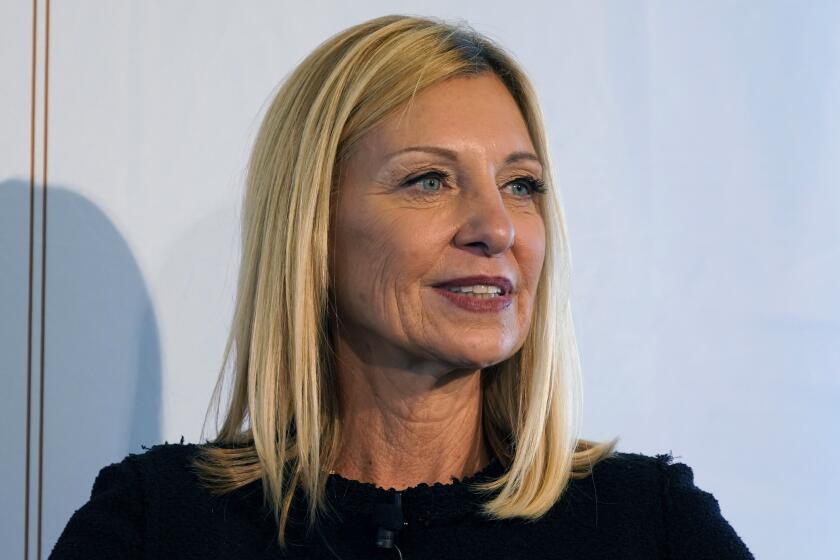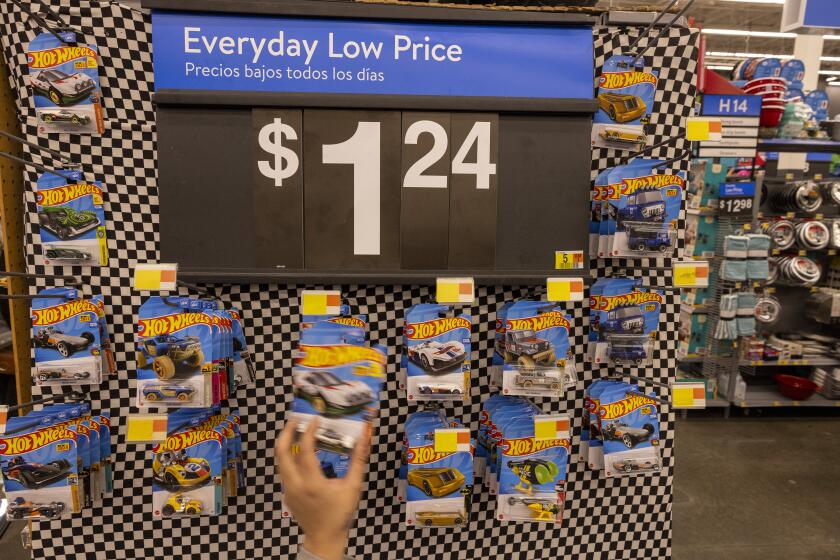For the DWP, it’s not easy being green
The L.A. Department of Water and Power is already under fire from customers for seeking a 9% boost in rates over the next three years primarily to pay for an upgrade of its aging electric system, parts of which broke down during the recent heat wave. A city mandate that 20% of the utility’s electricity come from renewable energy sources by 2010 could send rates higher.
In an effort to slow global warming by reducing greenhouse gas emissions, the Legislature last year passed a law requiring California’s investor-owned utilities to get 20% of their electricity from such renewable energy sources as solar, wind and geothermal by Dec. 31, 2010. Los Angeles city leaders and Water and Power commissioners decided that the DWP also should meet this goal. Currently, 6% to 8% of the public utility’s electricity comes from renewable energy sources. Bringing that level up to 20% -- which would supply 800,000 residents -- in such a short time while maintaining the system’s reliability may be impossible without raising rates higher than the DWP anticipates.
Three years may not sound like such a short time, but in California’s regulatory environment, it probably amounts to half the normal lead time needed. For starters, you can’t just build a wind farm anywhere. You need a site where there is steady wind. Solar power is most abundant in the desert. And geothermal energy requires underground reservoirs of hot water or at least hot rocks to make steam. And you need power lines to import the energy.
As a result, for the DWP to reach the 20% goal, it will probably have to go out of California for most of the electricity generated by wind, geothermal steam or the sun. The problem is that demand for renewable energy has skyrocketed, supply is limited and the 2010 deadline undercuts price competition. For instance, sellers of wind or solar power, aware that utilities are under time constraints, will be freer to charge higher rates because they control a very tight market for the relatively few renewable resources available.
California put itself in a similar box in the late 1990s when it gave so much market leverage to out-of-state power suppliers when writing the rules for deregulation. Rather than allow them to sign long-term contracts for power, the utilities were forced to buy electricity in the spot market, which was being manipulated by the Enrons of the world. That scheme was scrapped in 2001 as angry consumers protested impending rate increases and increasingly frequent emergency power cutbacks and blackouts.
The “greening” of the DWP is likely to increase rates for another reason. Renewable energy tends to be more expensive than such traditional energy sources as natural gas or coal. The facilities to harness wind and solar power are costly to build. Such power is not always available around the clock, so there are fewer hours each day to produce the revenue needed to pay off debt and cover expenses.
And if the sun isn’t shining or the wind isn’t blowing, you can’t depend on solar energy or windmills. For instance, during the summer heat wave, virtually none of the thousands of megawatts of wind-generated electricity was available during peak periods of demand. So the DWP will have to provide backup power for renewables from additional natural-gas or coal-fired generators, which will add costs.
In making the DWP more green, it’s also important that the reliability of the electric grid be maintained when adding sources of renewable energy to it. For instance, during the deregulation era, transmission lines often became bottlenecks for power coming from outside sources because they lacked the capacity to carry the extra load.
Typically, renewable power sites are in remote areas. To connect them to DWP customers will require the construction of transmission lines in and out of state, which must clear regulatory hurdles to take a particular path. In California, obtaining the necessary environmental permits can take two years even without any legal challenges. The DWP is already experiencing the difficulties that lie ahead. Environmentalists opposed a proposed transmission line to import power generated by renewables in the Imperial Valley because it would cross an environmentally protected area east of the San Bernardino Mountains.
The 2010 deadline also puts potential suppliers of renewable energy in California at a disadvantage because they face greater regulatory, environmental and permitting obstacles than do out-of-state suppliers. This means that many of the economic benefits associated with building renewable facilities, including good-paying jobs, will not be available here.
The DWP has long prided itself on providing reliable power to customers at a substantial discount, compared with investor-owned utilities. In fact, that was one of the reasons it chose not to participate in the state’s deregulation experiment. L.A. ratepayers still benefit from that decision. The city’s elected leaders should be mindful that in turning to more green power they must not forget the mandate to provide low-cost electricity to its customers.
These are some of the problems created by the 2010 deadline that seem to leave few options for the DWP. But that is not to suggest that the mandate to make the utility more reliant on renewable energy sources should be abolished. Indeed, the green requirement is an important pressure on the utility to perform. But a rigid deadline may prevent the DWP from making the smartest choices for its customers.
More to Read
Inside the business of entertainment
The Wide Shot brings you news, analysis and insights on everything from streaming wars to production — and what it all means for the future.
You may occasionally receive promotional content from the Los Angeles Times.










